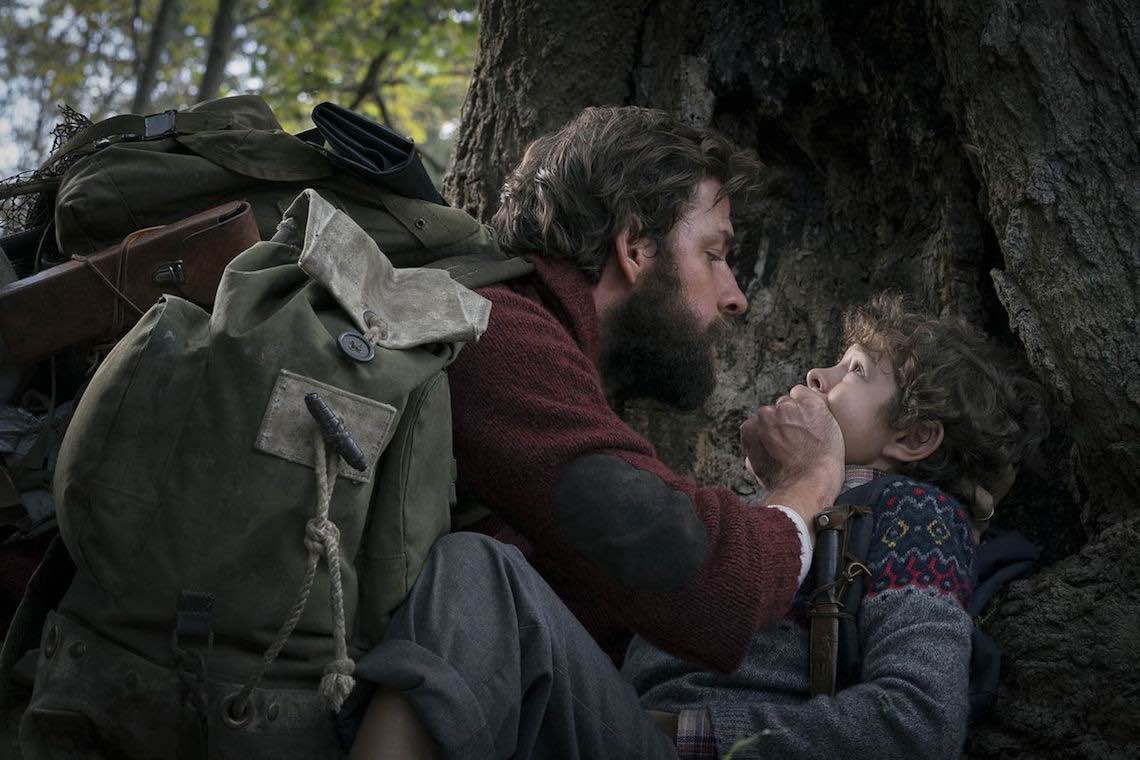John Krasinksi’s aptly named The Quiet Place has been described as ‘a silent film’ by his co-star and wife Emily Blunt. In fact, the film has little more than ninety lines of dialogue throughout. Silence in film moves the emphasis of the storytelling from verbal to visual, the style to ‘show and don’t tell’, with the story portrayed primarily through the cast’s acting. This is an unusual departure from Hollywood’s habit of over-explaining, to the point of characters thinking aloud, such as in the 2017 Netflix comedy When We First Met.
This wasn’t always the case; before sound was available in films, it was simply considered to be a visual medium. In the early 1920s, silent films utilised lighting techniques and camera angles to create an atmosphere and mood relevant to the story, and to the time. One example is that of The Cabinet of Dr Caligari (1920) which illustrates mental illness using harsh lighting and shadows in a variety of camera angles. As well as this, musical scores were vital in the creation of the atmosphere, and therefore the understanding of the storyline. According to The Sound Handbook, “Film music must supply what actors cannot say”.
A modern example of transcending language in film, is found in the 2018 Best Picture The Shape of Water by Guillermo Del Toro. Starring two silent characters, Elisa Esposito and ‘Amphibian Man’, this film places more emphasis on visuals than dialogue. Its style is reminiscent of French cinema, and is timeless. Set in 1962, the film’s colour palette mostly consists of reds and greens, echoing an underwater scene. This is ideal for the feel and theme of the film, which discusses the interaction between two worlds; one clinical and lonely, the other silent and watery. Music was also cleverly utilised to illustrate this silent union. Following the romantic French styling of the film, songs in French and other languages were featured. The multilingual nature of the soundtrack supports the notion that words themselves may be unnecessary to make a connection; between characters, and with the viewers.
Both The Shape of Water and The Quiet Place feature disabled characters; Elisa Esposito from The Shape of Water is mute, and Regan Abbott from The Quiet Place is deaf. The nature of silent films requires a different kind of acting, in which actors do not need to relay lines, only emotion via their movements and facial expressions. This is a refreshing deviation from Hollywood techniques of ‘telling’ rather than ‘showing’, as it feels more like an interaction and less like a spectacle. It also provides an opportunity for disabled actors to display their talent. Regan Abbott in The Quiet Place is in fact played by the deaf actress Millicent Simmonds, star of 2017’s Wonderstruck. With the film set in two different time periods, Wonderstruck director Todd Haynes was free to utilise deaf talent in the silent black-and-white portions and hired seven deaf actors in total.
Recently, silence has been appearing in films more and more often, ever since The Artist’s release in 2011. In The Quiet Place, the silence is even described as a character itself. Often seen in the horror genre, silence serves to build suspense, to the point that every person in the cinema is on the edge of their seat, avoiding chewing their popcorn in fear of shattering the atmosphere. In a ‘silent film’, the few sounds make more of an impression. In fact in horror movies, film composers can use ‘infrasound’, (low frequency sounds like those occurring during earthquakes), to induce anxiety and even heart palpitations. The sounds in a film, from the score to the sound effects, serve to support the visuals in creating an atmosphere.
Furthermore, as these contemporary silent films have demonstrated, compelling storytelling can be achieved with these techniques alone. This technique of ‘show and don’t tell’ arguably makes language secondary. In fact, film was originally a visual medium.
‘Contemporary Silent Films’ is an article written by Rachel Wyatt.

